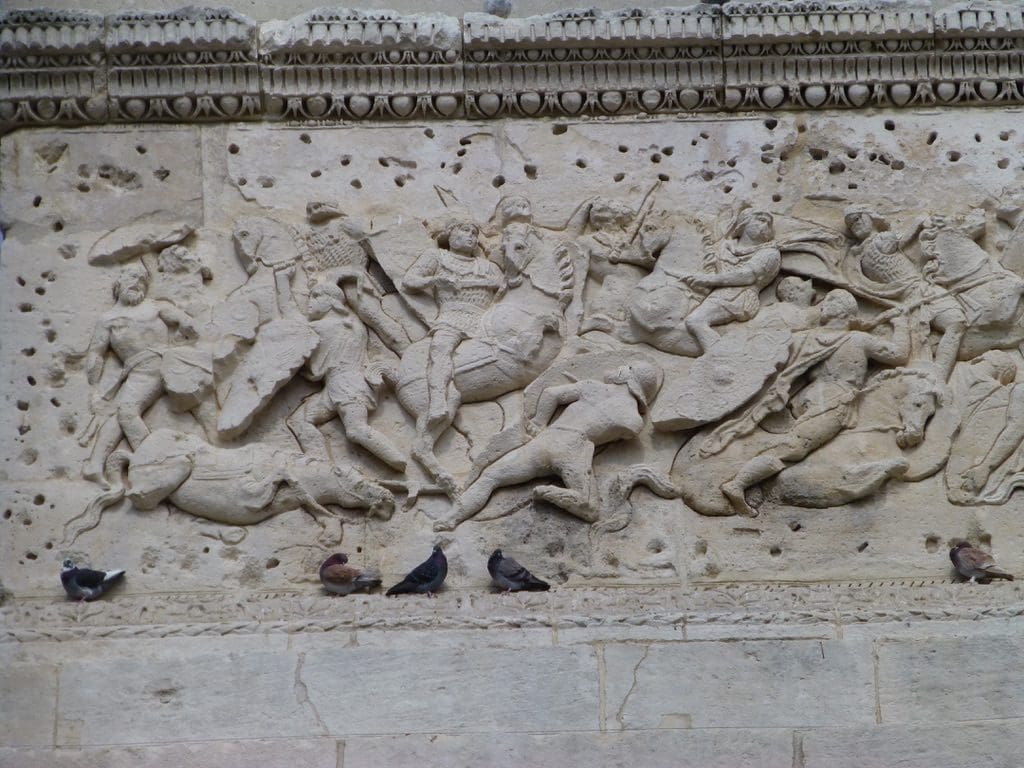I am the battle of Arausio
I am the Battle of Arausio – a battle that changed the course of history
The Battle of Arausio took place on October 6, 105 BC, at a site between the town of Arausio (modern day Orange) and the Rhône River. Ranged against the migratory tribes of the Cimbri (Danes) were two Roman armies commanded by the proconsul Quintus Servilius Caepio and consul Gnaeus Mallius Maximus. However, bitter differences between the commanders prevented the Roman armies from cooperating, with devastating results. The terrible defeat gave Gaius Marius the opportunity to come to the fore and to radically reform the organization and recruitment of Roman legions. Roman losses were up to 80,000 troops, as well as another 40,000 auxiliary troops (allies), servants and camp followers — virtually all Roman participants in the battle.
Even before battle was joined, the Romans were in trouble. The senior of the year’s two consuls, Publius Rutilius Rufus, was an experienced and highly decorated soldier, veteran of the recent war in Numidia, but for some reason he did not take charge of the military campaign but remained in Rome while his inexperienced, untried colleague Gnaeus Mallius Maximus led the legions north. Two of the major Roman forces available were camped out on the Rhône River, near Arausio: one led by Mallius Maximus, and the other by the proconsul Quintus Servilius Caepio. As the consul of the year, Maximus out-ranked Caepio and therefore should by law have been the senior commander of the combined armies. However, because Maximus was a novus homo and therefore lacked the noble background of the Roman aristocracy, Caepio refused to serve under him and made camp on the opposite side of the river.
The initial contact between the two forces occurred when a detached picketing group met an advance party of the Cimbri. The Roman force was completely overwhelmed and the legate was captured and executed. Meanwhile, Maximus had managed to convince Caepio to move his force to the same side of the river, but Caepio still insisted on a different camp, and actually pitched his camp closer to the enemy. The sight of two Roman armies caused the Cimbri to negotiate with Maximus.
Caepio, presumably motivated into action by the thought that Maximus might be successful in negotiations and claim all the credit for a successful outcome, launched a unilateral attack on the Cimbri camp on October 6. Caepio’s force was annihilated because of the hasty nature of the assault and the tenacity of Cimbri defence. The Cimbri were also able to ransack Caepio’s own camp, which had been left practically undefended. Caepio himself escaped from the battle unhurt.
The Cimbri then set to destroy the force commanded by Maximus. In other circumstances the army might have fled, but the poor positioning of the camp left them with their backs to the river. Many tried to escape in that direction but could not swim when encumbered with armor. Certainly, the number of Romans who managed to escape were very few.
Rome was a war-faring nation and was accustomed to setbacks. However, the string of defeats ending in the calamity at Arausio was alarming for all the people of Rome. The defeat left them with a critical shortage of manpower and with a terrifying enemy camped on the other side of the now-undefended Alpine passes. In Rome, it was widely thought that the defeat was due to the arrogance of Caepio rather than to a deficiency in the Roman Army, and popular dissatisfaction with the ruling classes grew.
As it turned out, the Cimbri set out for the Pyrenees instead of immediately marching into Italy. This gave the Romans time to re-organise. The catastrophic scale of the loss inspired the Roman senate and people to set aside their legal peacetime constraint (that no man could be consul a second time until ten years had passed since his first consulship) and instead Gaius Marius (‘the Saviour of Rome’) was immediately elected as consul, only three years after his first consulship, and then for a further four successive years after that.













